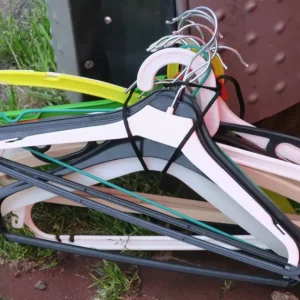Laser printers are one of the most popular types of printers used today. So how do they work? Laser printers use a technology called xerography, which involves using a laser beam to draw an image of the page onto a drum. In this blog, Manymon will discuss how does a laser printer work
How a Laser Printer Works

The drum is charged with a heated wire that’s then passed through a laser to reverse the charge. The drum’s now-negatively charged parts represent the image or text to be printed.
Toner particles stick to the drum’s negatively charged areas by passing a toner roller over it. The toner-coated drum is covered with a sheet of paper. Next, the toner is applied to the drum’s surface. This creates a printer copy of the digital document or image.
Laser printing has been a reliable and efficient printing method since 1976, when the first laser printers were commercially made available.
Laser printers incorporate laser beam technology to produce high-precision outputs. They are an ideal choice for busy offices and workplaces.
The Laser Printing Process: Step by Step

Laser printing is fundamentally different from inkjet printing, which uses precision streams of ink to print on paper.
There Are 9 Steps To Laser Printing.
- Data that needs to be printed are transferred from the computer into the laser printer. This can be done wirelessly or via an Ethernet cable, depending on whether the printer supports wireless connectivity.
- The corona wire must then be heated to heat the printer. Once heated, the wire passes a static electric charge to the drum unit.
- Now, the drum unit is positively charged and ready to receive the laser beam.
- After the laser has been activated, the beam is reflected off a moving mirror unit. This directs the beam onto the drum unit.
- The charge changes from negative to positive in the areas where the beam hits a drum. These negatively charged areas represent the locations where the toner particles will stick to the drum and transfer directly onto the paper.
- Now, the ink roller begins to apply toner to the drum. Toner is made up of microscopic ink particles that adhere to the negatively charged areas of the drum unit.
- Pass a positively charged sheet of paper close to the drum to attract the toner particles onto it.
- Now, the inked paper is being passed to the fuser unit, where the rollers fuse toner particles to paper.
- You can now print one page by simply passing the page to the opposite side of the copier.
Laser Printer Components

Modern laser printers have eight components. Each component is essential for producing the high-quality prints we’re used to. A printer’s anatomy includes:
Power supply
The power supply is required to charge the drum with high voltage. It converts AC current into the higher voltages that are needed to transfer the data.
Photosensitive drum
The drum unit’s purpose is to attract positively charged particles of toner onto its surface. Laser printers use corona wire, which is a high-voltage wire to accomplish this. After the drum has been charged sufficiently, the laser beam is directed onto the drum using mirrors that precisely scan the images onto it.
Toner cartridges
Laser printers make use of microscopic ink particles that are powdered in a form called toner. The toner melts once it is heated by the fuser unit and can be fused to the paper fibers using pressure.
Toner can be used in inkjet cartridges in the CMYK colors. These colors can be combined to create any color combination.
Are Laser Printers Harmful?

My office was shared with someone who wouldn’t allow me to use a laser printer in their office. We had to move the machine into a closet and close the door tightly. Although this is not a common occurrence, is it just superstition? Laser printers use a solid ink called “toner”, which can cause fine, dusty particulates. Also, car tailpipes release sooty particulates, one of the most dangerous ingredients in urban air pollution. A recent study showed that printers could emit more than 10 billion particles per page. However, the types and quantities of these particle emissions will vary from one model to another.
They also produce volatile organic compounds (VOCs) and a gas called Ozone. This is highly reactive oxygen with the chemical formula of O3. It can be toxic and has a number of adverse health effects if it is present at high enough levels. Ozone can be converted quickly into normal oxygen (O2) within buildings.
Are our printers and copiers a risk to our health or safety? There have been a few scientific studies that suggest printers and copiers pose a risk to our health. Also, you should take extra care when replacing toner cartridges and handling empty ones. Keep things in perspective. In a 2020 study by Jianwei Gu and others, “The health risks from LPD [laser printing devices]-emitted particles are small in comparison to the health risks from ambient particles.”
FAQs

1. What is a laser printer?
There are many types and models of the printer on the market today. Each uses different technologies to produce a similar printed page. The laser printer is the first invention. It was invented by Gary Starkweather, who was working as a product development engineer at Xerox. His idea was to use lasers for imprinting images onto copier drums that could then be transferred onto paper. Hence the name Laser Printer.
2. Laser printers require ink?
Laser printers use toner, a colored powder that is different from inkjet printers’ liquid ink.
3. Are laser printers more efficient than inkjet printers.
Why choose a laser printer instead of an inkjet printer? When you need to print large quantities in a short time, laser printers can be very cost-effective and efficient. Toner cartridges can hold enough ink to print thousands or even tens of millions of pages. This is far beyond the capabilities of most inkjet printers. They are also more affordable than inkjet printers.
There are a few exceptions to the rule, however, because inkjet technology has advanced.
Conclusion
This will be the first of many articles Manymôn write about How Laser Printers Work. If you like this article and want to see more, please make sure to leave a comment, give it a share on social media or check out our website Manymoon.com where we will be posting all things office-related. Thank you for taking the time to read









